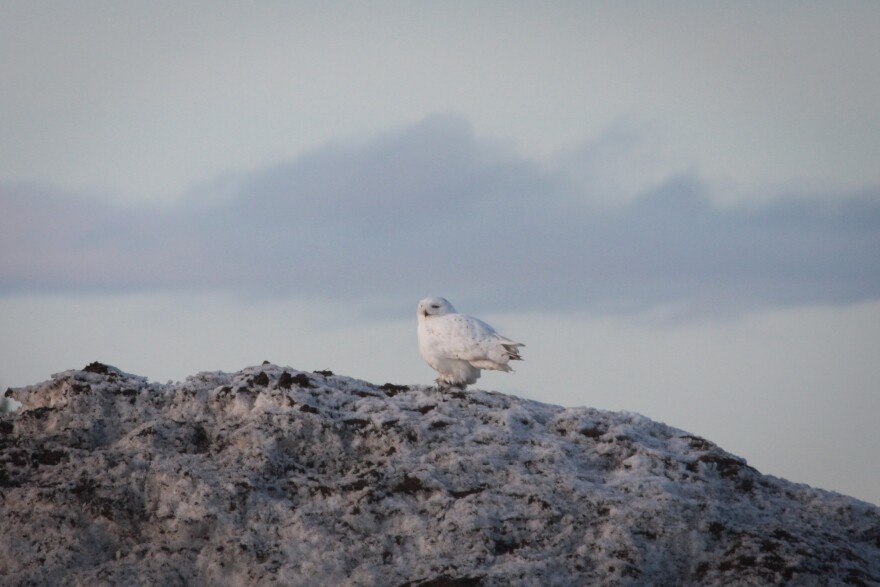Scientists are calling it a rare event and birders are hoping for a greater opportunity to see a snowy owl as an irruption of the species occurs across the northern quadrant of the U.S.
Birders are excited and scientists are trying to determine why there has been a large increase in the number of snowy owls migrating from the Arctic this year. Ebird.org, an interactive tracking map managed by the Cornell Lab of Ornithology, is reporting sightings as far south as Bermuda.
Lillian and Donald Stokes of New Hampshire are the authors of 35 books including The Stokes Field Guide to the Birds of North America. Lillian Stokes explains that in winter, snowy owls tend to stay north, but sometimes the population moves much further south. “The interesting thing is that nobody can really tell you exactly why this is happening, at this large a scale. But it definitely has something to do with owls not being able to be sustained on their northern areas. Probably ‘cause there’s not enough food to go around, either because of lack of food, or it could be that there are a bumper crop of owls born and then they have to leave and go elsewhere.”
The birds are being seen in areas similar to their native tundra. Vermont Department of Fish and Wildlife Rare Species Biologist Steve Parren notes that while snowy owls are occasionally seen in the region during winter, this year the population in Vermont is unusually high. “They’re looking for food. They’re an animal of the open tundra. So they’re looking for wide open spaces. We have a lot of that in Vermont. The Champlain Valley, for instance, would be a great place.”
Vermont Center for Ecostudies Conservation Biologist Kent McFarland expects that the snowy owls are looking for large open areas with a prey-base for food. “Airports are a great place year in, year out, for snowy owls. So a place like Boston Logan Airport always has snowy owls almost every year. Because those places are open areas that sort-of look like tundra where their nesting and breeding habitat is.”
JFK airport in New York City planned to shoot any snowy owls sighted after five flew into airplanes. McFarland is pleased that New York airport officials are now following Logan Airport’s lead. “Boston Logan has been lucky because Norm Smith from the Massachusetts Audubon Society harmlessly traps snowy owls and then takes them miles away. And it sounds like the Port Authority in New York City just wasn’t aware of the possibilities of that. The Port Authority in New York actually rather quicky changed their policy and is trying to work like Boston Logan with trapping and moving the snowy owls.”
The timing of the snowy owl incursion couldn’t be better for birders, especially for those who participate in Audubon’s annual Christmas bird count, which begins this weekend. Audubon NY Executive Director Erin Crotty is thrilled. “In some cases it may be a once in a lifetime opportunity. So it’s very exciting to have so many snowy owls in our region. They’re really incredible birds. Look for them in areas that resemble their breeding grounds in the Arctic.”
According to the Vermont Fish and Wildlife Department, snowy owl irruptions typically occur about once every four years. In recent winters, they have become more frequent, with large numbers reported in the continental U.S. during 2011 and 2012.



